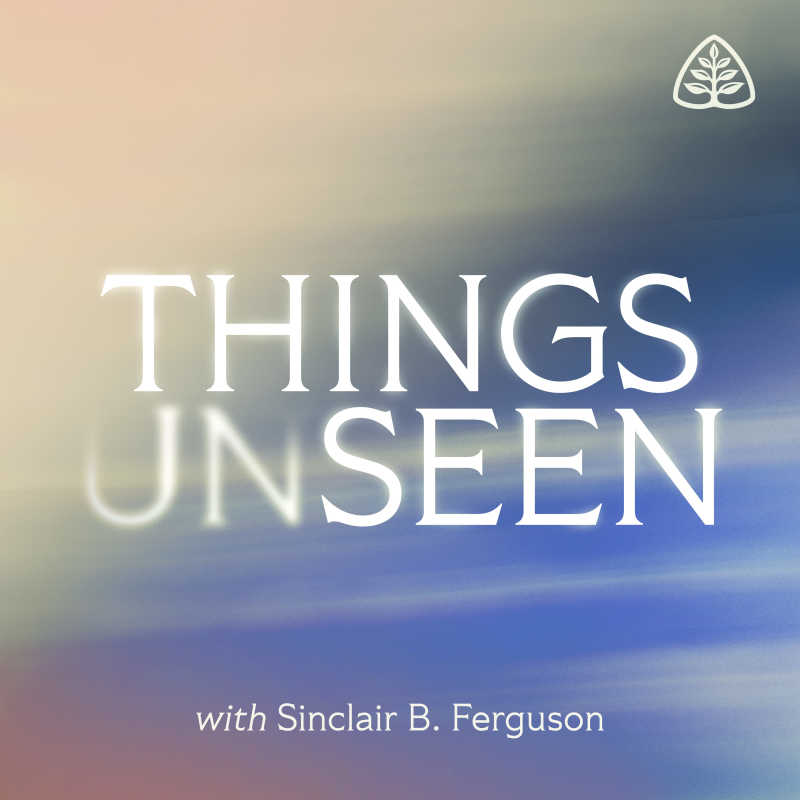Different Kinds of Angels

Angels are as intriguing as they are mysterious. One of the most remarkable things Scripture reveals about these heavenly creatures is their sheer variety. Today, Sinclair Ferguson examines the types of angels in the Bible.
Transcript
Welcome again to Things Unseen, where this week, in the run-up to Christmas, we’re actually thinking about angels and their ministry. Of course, there’s much we don’t know about angels, but that shouldn’t prevent us from reflecting on what we do know. And here’s something we do know: there seem to be different orders of angels and perhaps even different kinds of angels.
We know that there’s at least one archangel because he’s referred to in that way in 1 Thessalonians 4 in connection with the Lord’s return, when the Lord Jesus will overwhelm His enemies and destroy death itself. And we know his name, he’s called “Michael” in Jude 9, where he’s said to have contended with Satan over the body of Moses. He appears again in Revelation 12:7 as the one who fought against the dragon. And in Daniel 10, he’s described as “the prince.” He always seems to appear in a kind of military context, appearing on behalf of God’s kingdom as the guardian and protector of God’s people, like a general among the hosts of heaven.
And then we also know the name of another angel, Gabriel, from Daniel 8 and 9. Since Michael is referred to as one of the chief princes in Daniel 10, perhaps Gabriel is another. I wonder if there are more. Gabriel’s honored position is underlined by the fact that he’s the one who appears to Zechariah and to Mary, announcing Johns’ and Jesus’ births. And he seems to be less of a military leader and more of a kind of royal herald, a communicator and interpreter of the divine will. So, these two chief princes, archangels, express God’s purposes in deeds and in words. One guards the people of God, and the other communicates God’s will to them at crucial moments.
And in addition to these ranks or roles, there actually seem to be different kinds of angelic beings. There are cherubim, or keruvim, and they appear first in Genesis 3:24, guarding the way to the garden of Eden. Remember how they’re symbolized later in the two cherubim who overshadow the mercy seat on the ark of the covenant? They are guardians of the glory of God. And on a number of occasions, the Lord is described as “dwelling between the cherubim.” I think it’s especially interesting here to read how Ezekiel, in chapter 1 and chapter 10, describes them as having four faces—in chapter 1, like an ox, an eagle, a lion, and a man; but then in chapter 10, they’re described as having the faces of an eagle, a lion, a cherub, and a man. They sound to me, just a little like non-identical twins, don’t they? And they bear away the glory of God from the temple when man has defiled it. It makes you wonder who first thought up the idea of calling children’s church or children’s choirs, “Little Cherubs,” doesn’t it? They seem to be extraordinarily powerful creatures.
And then there are the seraphim who appear in Isaiah 6, and they’re described again differently from the cherubim. And clearly, they are servants of the holiness of God, as well as ministers of His goodness and grace.
Now, these heavenly creatures appear in visions in Isaiah and in Ezekiel. Neither prophet claims to have met a seraph for a cherub in the streets. But the cherubs in Genesis 3 are not represented as a vision, and we should assume the same of the seraphim. They are real and majestic beings. And if Ezekiel describes the cherubim by using analogies, he’s wanting to put into words what he actually saw. He says, “Their appearance was like burning coals of fire, like the appearance of torches, moving to and fro among the living creatures . . . the living creatures,” he says, “darted to and fro, like the appearance of a flash of lightning” (Ezek. 1:13–14, emphasis added). They transcend simple description. We might even ask, Are these creatures angels at all, or are there other kinds of creatures in this extraterrestrial world as well as angels and archangels?
Well, as I say, there are mysteries to God’s heavenly creatures, but here are two things for us to reflect on today: first, to think for a moment about just how rich and full that heavenly world of God really is, and then second, to ask ourselves this question: “Have I assumed too easily that this is the real world, the world that really matters, the substantial world, whereas that world is kind of empty, ephemeral, insubstantial, when the truth is that world is actually very substantial, very real, and full of glorious life?”
Or we can think of it this way: we are only one branch of the amazing family God has created through His Son, Jesus Christ. There’s another heavenly branch to the family, and one day, those two families will meet together in the new heavens and the new earth. No wonder those who are already in heaven must have discovered it’s full of amazing and wonderful surprises. That’s something to look forward to.

